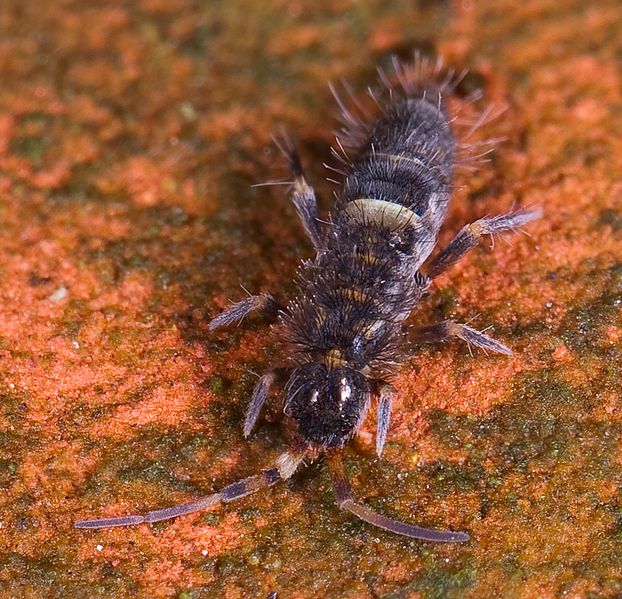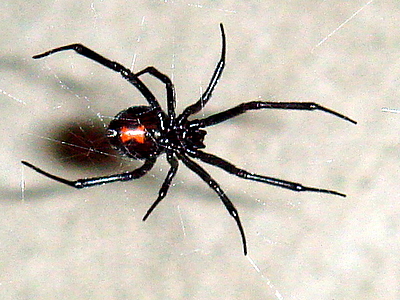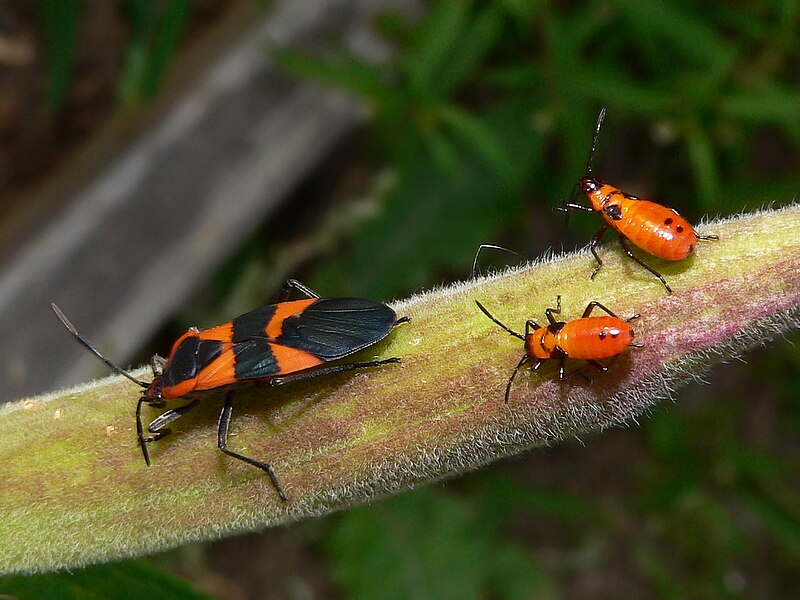 I’m frequently contacted by amphibian keepers who find that their pets are floating about at the water’s surface and seem unable to submerge. While gas produced by bacteria within the animal can cause this, the most frequent culprit is Gas Bubble Disease. This term is sometimes used to refer to any of several related but different maladies, and commonly afflicts African Clawed Frogs (Xenopus laevis), Dwarf Clawed Frogs (Hymenochirus spp.) and Mexican Axolotls (Ambystoma mexicanum). Read More »
I’m frequently contacted by amphibian keepers who find that their pets are floating about at the water’s surface and seem unable to submerge. While gas produced by bacteria within the animal can cause this, the most frequent culprit is Gas Bubble Disease. This term is sometimes used to refer to any of several related but different maladies, and commonly afflicts African Clawed Frogs (Xenopus laevis), Dwarf Clawed Frogs (Hymenochirus spp.) and Mexican Axolotls (Ambystoma mexicanum). Read More »
Tag Archives: Amphibian Health
Feed SubscriptionRaising Springtails as Food for Poison Frogs, Mantellas and other Small Amphibians – Part 1
 The diets of captive Poison Frogs (Dendrobates, Phyllobates, Oophaga), Mantellas, small salamanders (i.e. Red-Backed Salamanders) and tiny, newly-transformed amphibians are usually limited to the two readily available foods of appropriate size – pinhead crickets and fruit flies. The minute, wingless insects known as Springtails (Order Collembola) are easy to procure and rear, and offer a convenient means of increasing dietary variety for small amphibians.
The diets of captive Poison Frogs (Dendrobates, Phyllobates, Oophaga), Mantellas, small salamanders (i.e. Red-Backed Salamanders) and tiny, newly-transformed amphibians are usually limited to the two readily available foods of appropriate size – pinhead crickets and fruit flies. The minute, wingless insects known as Springtails (Order Collembola) are easy to procure and rear, and offer a convenient means of increasing dietary variety for small amphibians.
Natural Diets of Smaller Amphibians
Most small terrestrial frogs and salamanders forage among leaf litter, which is invariably inhabited by thousands of species of tiny invertebrates (surprisingly, the weight of invertebrates in most habitats exceeds that of all vertebrates combined!). It seems certain that these amphibians consume an extremely varied diet in the wild, and that typical captive diets do not meet their nutritional needs.
Aphids (1/8-inch-long green or red insects found in colonies on plant stems) are an option, but these are becoming scarce in many areas and, with their complicated life history (involving sex-switching and other unique twists), are difficult to maintain long-term. One can also collect ants, tiny beetles and other leaf litter invertebrates (please see article below), but of these only Springtails can be easily bred in large numbers.
Problematical Captives
 Some amphibians are so small that even pinhead crickets prove too large a meal. I’ve run into this situation with Kihansi Spray Toads (Nectophrynoides asperginis), which are a mere ¾ inch long when full grown. These toads, now likely extinct in the wild, give birth to fully formed toadlets that are so small as to be barely visible. A steady supply of Springtails was essential to the successful rearing of these Tanzanian natives, the last of their kind on earth. Folks breeding other tiny amphibians, such as Strawberry Poison Frogs (Oophaga pumilio), will also find Springtail colonies an invaluable resource.
Some amphibians are so small that even pinhead crickets prove too large a meal. I’ve run into this situation with Kihansi Spray Toads (Nectophrynoides asperginis), which are a mere ¾ inch long when full grown. These toads, now likely extinct in the wild, give birth to fully formed toadlets that are so small as to be barely visible. A steady supply of Springtails was essential to the successful rearing of these Tanzanian natives, the last of their kind on earth. Folks breeding other tiny amphibians, such as Strawberry Poison Frogs (Oophaga pumilio), will also find Springtail colonies an invaluable resource.
Procuring Springtails
With over 6,000 species identified thus far, Springtails are common in most temperate and tropical habitats. They usually appear as tiny white “dots” jumping about below fallen leaves. You can start a colony by scooping them up in the leaf litter or by purchasing any of the several species available through commercial suppliers. Most breed well in captivity and can build up enormous populations under favorable conditions – please see Part II of this article for details.
Further Reading
Whenever possible, the diets of smaller amphibians should be supplemented with wild-caught invertebrates. Please see Collecting Leaf Litter Invertebrates for some useful techniques.
Strawberry Poison Frog image referenced from wikipedia and originally posted by Encarna Sáez Goñalons & Víctor Martínez Moll
Springtail image referenced from wikipedia and originally posted by Mvuijlst
Live Plants in Amphibian Terrariums – Pesticide Concerns
Live plants are very useful in creating amphibian terrariums that are both attractive to the eye and beneficial for the animals housed therein. However, amphibian skin is permeable to substances as small as oxygen molecules. Several readers have recently questioned whether pesticides used on terrarium plants could harm amphibians through physical contact.
Examples of Contact Poisoning
 Most chemicals do readily penetrate the skin of frogs and salamanders and can kill them in short order. Pesticides on plants are a concern, even though they will not be consumed.
Most chemicals do readily penetrate the skin of frogs and salamanders and can kill them in short order. Pesticides on plants are a concern, even though they will not be consumed.
A coworker of mine once lost a group of Blomberg’s Toads and Smoky Jungle Frogs after confining them to quickly-rinsed enclosure that had been cleaned with Nolvasan, and I witnessed a Leopard Frog expire after being put into a pail that had previously housed a Fowler’s Toad (the stressed toad had apparently released skin toxins).
Locating Safe Plants
Some commercial growers who cater to zoos and the pet trade claim not to use pesticides. The reptile department of your local zoo, if reachable, might be a good place to start when searching for reputable plant suppliers. Pet stores specializing in tropical fishes usually buy pesticide-free plants as well. Some, especially those that carry plants for outdoor ponds, may stock emergent species or others suitable for use with amphibians.
Removing Surface Pesticides
If you are unsure of pesticide presence, discard the soil that arrived with the plant and rinse the plant, roots and all, vigorously. Finish up by submerging the plant and swishing it about underwater. Some recommend a light soap solution, but I have not found this to be necessary.
Systemic Pesticides
A greater potential concern is posed by systemic pesticides, which do not remain on the surface but rather work their way into the plant’s tissues. Fortunately, these are not commonly used with on commercially raised plants suitable for terrariums.
One colleague of mine did run into a situation involving systemic pesticides. He held the plants for 30 days before introducing them to his exhibits. He had no problems with any of several tree frog species that utilized the plants frequently, and eventually used them with arboreal salamanders (Bolitoglossa spp.) as well. This time frame is based on observation rather than rigid testing, but has proven quite dependable.
Further Reading
Those who keep herbivorous turtles and lizards also need to be concerned about potentially lethal plants. The species listed in my article Common Plants that are Toxic to Birds should be avoided by herp keepers as well.
To learn about growing safe plants for herbivorous reptiles, please see Reptile Gardens.
Wild Caught Invertebrates as Reptile and Amphibian Food – Pesticide Concerns – Part 2
Please see Part I of this article for a general discussion regarding the collection of insects and other invertebrates and their use in the diets of captive reptiles, amphibians, birds, invertebrates and fishes. Today I’d like to focus on some areas of special concern.
Toxic and Biting/Stinging Invertebrates
 While not involving pesticides per se, for your own safety and that of your collection it is imperative that you learn to identify the toxic or otherwise dangerous invertebrates that you may encounter while collecting. A good field guide (i.e. Audubon, Golden Guide or Peterson series) is indispensable in this regard. Be sure to handle unfamiliar species with plastic tongs.
While not involving pesticides per se, for your own safety and that of your collection it is imperative that you learn to identify the toxic or otherwise dangerous invertebrates that you may encounter while collecting. A good field guide (i.e. Audubon, Golden Guide or Peterson series) is indispensable in this regard. Be sure to handle unfamiliar species with plastic tongs.
Please bear in mind that even relatively mild bee venom can cause fatalities in allergic people. And while less than 1% of the world’s 40,000+ species of spiders are considered dangerously venomous to us, a number readily bite both people and animals in self defense. It is best, therefore, to avoid them…the Thin-legged Harvestman or “daddy long-legs”, which are not spiders, are safe to use. Steer clear also of bees, wasps, large ants, stag beetles and others well-equipped to defend themselves.
Bright colors often indicate that an animal is toxic or bad-tasting; ladybugs, fireflies, milkweed bugs and a great many others fall into this category. Unless you are sure of an insect’s identity, the safest course of action is to avoid brightly-colored species.
Native vs. Non-Native Prey Species
In many cases, predators avoid dangerous prey animals that occur naturally within their ranges; this can spare both pet and pet- keeper a good deal of grief! However, dangerous non-native prey animals may be attacked with abandon if the hunter has no “frame of reference”, so use extra caution in such cases.
keeper a good deal of grief! However, dangerous non-native prey animals may be attacked with abandon if the hunter has no “frame of reference”, so use extra caution in such cases.
I have, for example, housed highly-toxic Marine Toads with Green Anacondas for decades without incident, despite the fact that anacondas consume non-toxic frogs readily. However, Australian monitors and snakes, which have no instinctive or learned toad avoidance behavior, eagerly consume the Marine Toads that have been introduced there, often with fatal results.
Earthworms
Earthworms are one of the most nutritious live foods available. There are, however, situations that warrant precautions.
Earthworms are unique in consuming dirt as they tunnel, and in doing so may concentrate toxins present there. To my knowledge, the only problem that has arisen thus far has involved worms that dwell along golf courses, which are subjected to unusually high degrees of pesticide application. Please see my article Raising Earthworms for details concerning striped skunks and earthworms in NY.
West Nile Control and Related Programs
Avoid collecting invertebrates for 1 week after an area has been sprayed as part of West Nile eradication efforts, and steer clear of farms where pesticides are known to be applied regularly. Avoid also local insects that are considered to be agricultural pests, as they are likely the subject of control measures (this may apply to aphids, caterpillars, Japanese Beetles, etc.).
Enjoy
Despite the precautions that must be taken, invertebrate collecting is a fascinating and thoroughly enjoyable endeavor. Don’t forget to examine your catch closely…several years ago a new species of centipede was uncovered in NYC’s Central Park, on ground trod daily by thousands of people. Like me, you just may wind up keeping some of your discoveries in captivity for their own sake!
Further Reading
For a very interesting account of how toads learn to avoid stinging insects, please see my article Amphibian Learning Abilities.
Please write in with your questions and comments.
Black Widow image referenced from wikipedia and originally posted by Trachemys.
Milkweed Bugs image referenced from wikipedia and originally posted by Greg5030.
Methylene Blue as a Treatment Option for Fungal, Protozoan and Bacterial Infections in Frogs and Salamanders: Amphibian Health
A common drawback in dealing with pathogen outbreaks among captive amphibians is the great sensitivity of most species to available medications. Drugs formulated for fish, used as a soak or bath, have great potential. However, amphibians absorb liquids over a much greater surface area than do fishes – in some cases with the entire skin surface – and it is therefore difficult to ascertain proper dosages. Dose reduction is largely a hit-and-miss prospect, as each amphibian differs in absorption ability – medication failure and patient death are all too frequent.
A Malaria Medicine Rescues Stranded Tadpoles
Methylene Blue, a compound that found favor in 1891 as a human anti-malarial agent (and subsequently lost favor due to its propensity to turn the urine green and the whites of the eyes blue!) is one of the safest medications to use with amphibians. It is widely used as a fish medication, but often overlooked by those working with amphibians. I was first impressed by its benign nature when called to rescue several hundred American bullfrog tadpoles from the bottom of a recently drained pond in NYC. The tadpoles had been flopping about for over an hour by the time I arrived, and were all cut up and bleeding.
Without much hope of success, I transferred the tadpoles to several plastic garbage cans and added Methylene Blue at a concentration a bit higher than recommended for fish. Normal procedure would have been to use ½ fish strength and gradually increase the dosage while observing the tadpoles’ reactions, but such takes time and these fellows had little of that. I was surprised to see no signs of stress, and astonished the next morning when most looked quite well. Eventually, a great many recovered.
Use Methylene Blue
I have since used Methylene Blue in private and public collections for a range of amphibians, including Argentine horned frogs, spotted salamanders and Surinam toads. It has been successful against fungus (most likely Saprolegnia) and certain bacteria associated with wounds and “red leg”. I’ve had mixed success in using it to combat fungus on amphibian eggs (smoky jungle frog, bell frogs, poison frogs) – the results likely depend upon the species of fungus involved. I begin with ½ the fish dose and a soak time of approximately 1 hour – gradually increasing both if necessary. For eggs, I dilute the Methylene Blue in water and then use an eye dropper to place it on the eggs (approximately 1 drop per 2 inch square of egg mass).
Treated amphibians will be stained blue for awhile (as will your hands if you do not wear gloves), but results have been very good. Where the compound has not worked, it at least caused no harm, and therefore lent the option of using alternative medications.
Drug resistant strains of malaria have researchers once again investigating the use of Methylene Blue as a treatment option for people. An interesting article regarding this is posted at:
 That Reptile Blog – Reptile, Amphibian and Exotic Pet Care and Information
That Reptile Blog – Reptile, Amphibian and Exotic Pet Care and Information
